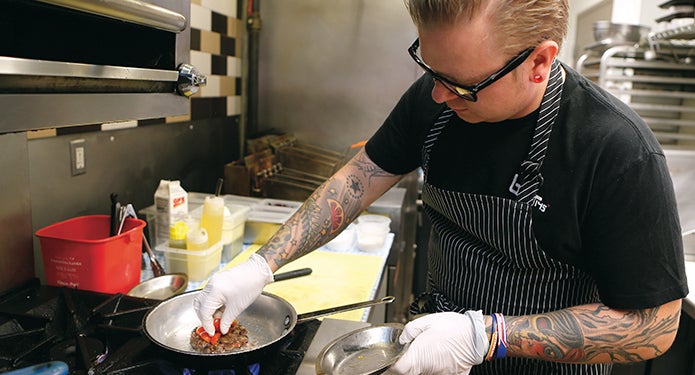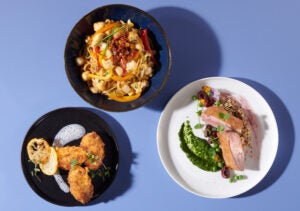Bringing value-added products into operation can help you overcome labour challenges while driving quality and consistency.
With fresh, creative (and Instagram-worthy) dishes in high demand and labour in short supply, chefs today are facing an unprecedented crisis. According to the most recent study by Restaurants Canada, nearly half (48%) of table-service restaurants reported a shortage of skilled labour in Q4—the highest share since Q4 2014.
“It’s a helluva topic to discuss,” says Stéphane Renaud, Corporate Chef, Gordon Food Service, Quebec City. “Labour is getting very scarce, tough to source and often not skilled. Operators are not able to put into place the level of quality they want.”
One solution chefs are turning to? Value-added products. To be sure, this is not a sexy topic. For years, value-added products have suffered under some pretty stifling preconceived notions: they’re not for “real chefs,” they’re institutional or using them cuts corners at the expense of creativity and flavour.
Time to take a fresh look
Fortunately, times have changed. Value-added products offer fresh solutions—from specific products produced with chef’s specifications to flash-frozen vegetables that retain fibre and flavour integrity and are nearly indiscernible from fresh—that allow operators to maintain their creative edge while facing a limited pool of skilled labour.
“It’s a logical solution to a very real problem,” Renaud says. “Four or five years ago, nobody was interested in many value-added products. But now, you are looking at 70-80 hours of labour just to do basic mise en place. This is time that chefs could instead use to be on the line, making sure plates are up to specs.”
Incorporating value-added products allows operators to dedicate more time to providing consistent quality and building creative dishes. Michael Viloria, Culinary Chef, Gordon Food Service, British Columbia points out that embellishments, like rosemary brown butter and black pepper honey on a dish of chicken and waffles, are what make menus unique.
“When yield, labour and consistency are top of mind, value-added is a great option to consider,” he says. “What I have found is that most operators have limited real estate and tools to work with, yet strive to have a variety of offerings on their menus. Value-added has made it possible to create and compete within the market.”
Extra cost-savings benefits
Not only do value added products provide some relief from the labour shortage, they also allow for streamlined inventory and cost savings through a reduction in food waste. Precooked or prepacked products, such as a basic braised beef, simply need to be thermalized and assembled and can be pulled throughout the menu in a variety of applications. Fresh herbs, bright citrus and seasonal produce can round out dishes without taxing the kitchen.
“With value-added, you are working with a finished product where you can serve it as is or play with it to make it your own,” Viloria says. Viewing value-added products as a base allows operators to conserve labour for those top-note final touches that stand out to customers.
The reality of the market means kitchen staff must be performing tasks that directly contribute to increased revenue through a higher perception of value. When analyzing a menu and factoring the actual cost of the ingredient and the labour involved, the need for value-added products becomes clear.
There is nothing to be gained by having cooks spend hours peeling potatoes and carrots; quite simply, customers will never notice and it certainly will not increase the inherent value or integrity of a dish. David Evans, Culinary Chef, Gordon Food Service Ontario points out that “purchasing pre-peeled and ready to cook vegetables would in no way change the creativity of a menu, but would save hours of labour that could then be used to create, for example, house-made desserts that are really different and make a much larger contribution to profit margin.”
That’s a pretty sweet solution.

























